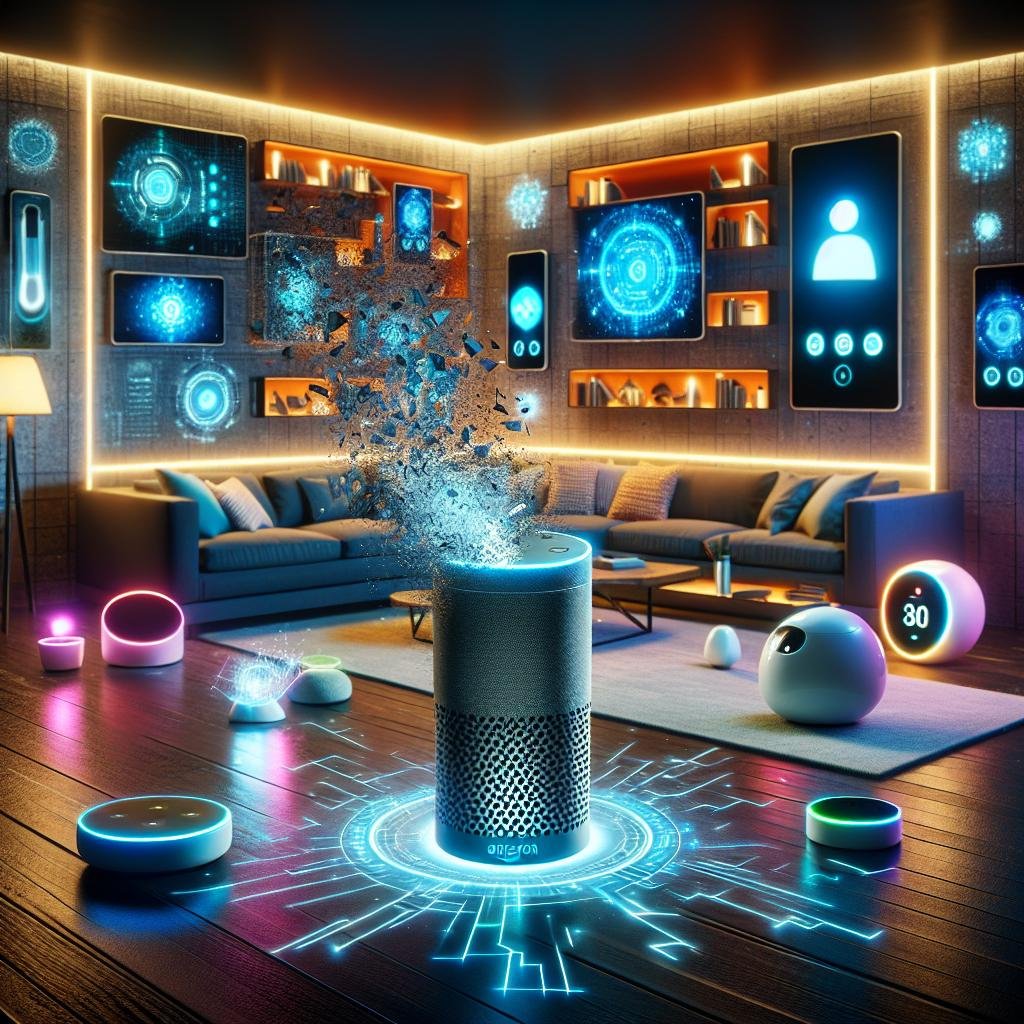
Is the Smart Speaker Era Fading? Here’s What You Need to Know
Smart speakers once revolutionized the way we interact with our homes. With just a voice command, we could control lights, play music, or even order groceries. But as 2025 continues, a new question emerges: Are smart speakers dying?
Whether you’re just diving into smart home technology or you’re a seasoned enthusiast, it’s crucial to understand how the landscape is shifting. Let’s explore five surprising trends signaling what’s next for smart speakers—and how it could reshape your connected home.
- ECHO SPOT – Ein stylischer smarter Wecker mit Alexa, der mit großartigem Klang begeistert. Dein idealer Begleiter beim A…
- PERSONALISIERBARE SMART CLOCK – Lies Uhrzeit, Wettervorhersage und Songtitel direkt vom Display ab, steuere Smart-Home-G…
- GROSSARTIGER KLANG – Satter Klang, klare Stimmen und tiefe Bässe. Bitte Alexa einfach, Musik, Hörbücher oder Podcasts vo…
1. Big Tech Is Losing Interest in Smart Speakers
The smart speaker boom has cooled significantly. Reports show that flagship developers like Google are stepping back from aggressively developing voice assistant hardware.
Google Pulls Resources from Google Assistant
Google has reportedly reduced investments in Google Assistant’s development. Instead of innovating on new speaker models, the company is focusing on adding Assistant support to third-party platforms. This pivot has slowed down new product releases and limited upgrades for existing devices.
What does this mean for users? If you’re using a Nest Audio or Mini, you might not see major new features or hardware upgrades anytime soon.
2. The Rise of Ambient Computing Is Replacing Voice-Only Devices
Consumers are moving toward ambient computing—where devices work silently in the background—over directly interacting with voice assistants.
Smart Displays and Automation Over Voice Input
- More people are choosing smart displays that integrate touch and visuals.
- Home automation routines triggered by motion or schedules are rising in popularity.
- Voice control is becoming a secondary feature, not the primary interface.
Why this matters: If your smart home relies solely on voice commands, you may find newer devices focusing on richer control methods like apps and gestures.
3. Smart Speaker Sales Are Dropping
The numbers don’t lie—global shipments of smart speakers are steadily declining. This downtrend is a sign that the market may be reaching saturation or that users are growing disillusioned by limited functionality.
Fewer Households Are Buying Multiple Devices
Early adopters once dotted every room with smart speakers. Now, most homes stick with a single unit or turn to multipurpose gadgets. This behavior shift reflects a desire for fewer devices that do more.
Example tip: Instead of buying several speakers, consider a smart display like the Nest Hub Max for voice commands, video calls, and visual controls—all in one.
- 80W MAX BASS-POWER: Der erweiterte Racetrack-Subwoofer entfesselt mit 50% mehr Volumen einen Bass, der mit Präzision und…
- 2.1 STEREO-FEINSCHLIFF: Ein 40W Subwoofer und zwei 10W Hochtöner, ausbalanciert durch fortschrittliche Crossover-Technik…
- RUND UM DIE UHR BEATS: Durchgehender Musikgenuss mit 24h Akkulaufzeit. Unterwegs wird dein Handy dank der Powerbank-Funk…
4. Voice Assistants Are Not Evolving Fast Enough
One of the biggest frustrations among users is how little voice AI has progressed in recent years. Accuracy, contextual understanding, and complex command handling still lag behind expectations.
Limited Learning and Integration
Voice assistants haven’t become significantly smarter—they still struggle with tasks requiring memory, multi-layered questions, or detailed follow-ups.
- Forgetful assistants: Can’t remember user preferences beyond a session.
- Limited third-party support: Integration with smart home ecosystems is inconsistent.
- Privacy concerns persist: Users are still wary of devices always listening.
What this means for smart homes: You’re better off using apps like Google Home or Alexa for setting up detailed automations instead of voice commands alone.
5. The Smart Home Is Moving Toward Matter and Ecosystem Unification
With the introduction of Matter, a new smart home standard, the industry is leaning toward platform-agnostic solutions. This could signal the end of voice-first ecosystems like Google Assistant and Amazon Alexa as must-have hubs.
Matter Brings Plug-and-Play Simplicity
Matter allows smart home devices to communicate seamlessly, whether you’re on Android, iOS, using a Google Nest Hub or an Apple HomePod. Voice assistants become optional in this setup—not essential.
Consumers are drawn to this flexibility, choosing devices based on functionality rather than brand loyalty.
What This Means for Your Smart Home Setup
If you’re building or upgrading a smart home in 2025, it’s time to rethink the role of smart speakers. Instead of placing them at the center, consider them as one component among many—especially as self-running automations and app-based controls become more intuitive.
Smart Home Tips for the New Era:
- Focus on devices with Matter support to ensure long-term compatibility.
- Invest in smart displays or multipurpose hubs over single-function speakers.
- Use apps like Google Home or Apple Home to set up automation scenes and routines.
- Only use Assistant or Alexa for quick commands or when your hands are full.
- Bring deine Sound Experience aufs nächste Level. Die sechs vorne, an den Seiten und oben positionierten Treiber unterstü…
- Mach den gesamten Raum zum Sweet Spot. Erlebe einzigartigen Sound, egal wo du bist oder was du abspielst. Spezielle Well…
- Gib Inhalte über jeden Dienst und jedes Gerät wieder. Streame all deine Lieblingsdienste über WLAN. Verbinde ein Bluetoo…
Conclusion: The Smart Speaker Isn’t Dead—But It’s Changing
Smart speakers aren’t vanishing overnight, but their role in the smart home is shifting dramatically. As companies scale back and users demand more from their devices, the focus is moving away from voice-only interactions.
If you’re planning your smart home in 2025 and beyond, it’s essential to think beyond the speaker and consider the full ecosystem. Devices that offer visual feedback, automation capabilities, and interoperability will lead the way.
Ready to modernize your smart home? Explore our Smart Home Guides for expert tips or check out our picks for the best smart home devices to get started.


